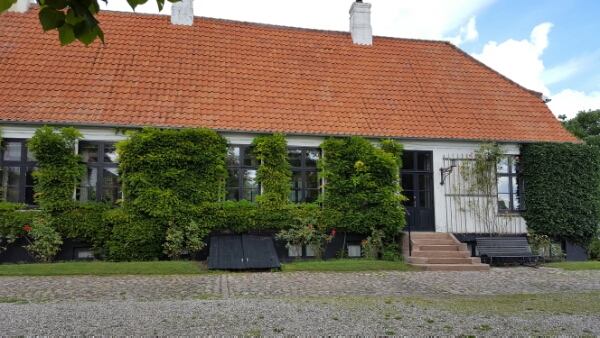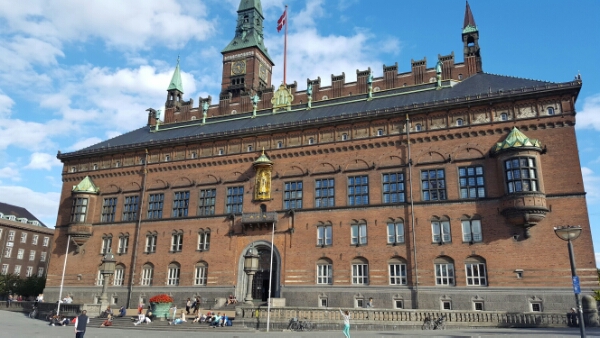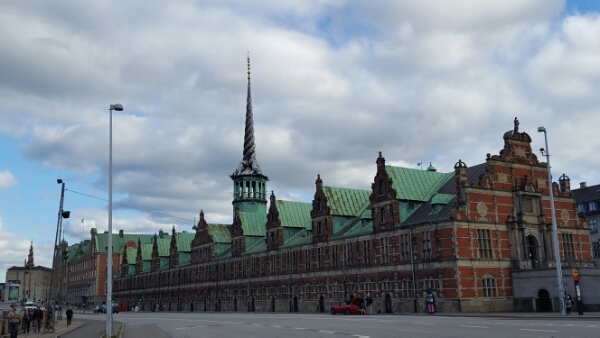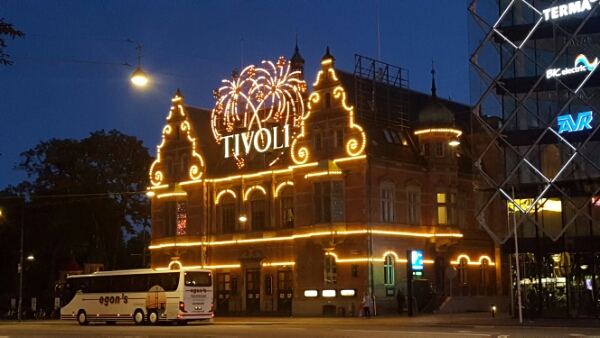The sensation of time speeding up is upon me again. I can’t believe we’ve been away for 71 days; we’ll be home in a little less than three weeks. At this point, home seems as foreign a concept as an overseas holiday does deep in busy season. Reality is sometimes not an easy thing to flip. Not for the first time, I ponder the possibility of just…continuing. There’s so much of Europe yet to explore. And so much already seen I’d love to see again. The travel bug; its bite is deep and lasting.
We leave Helsingor this morning, bound south along the eastern coastal route of Northwestern Zealand. The decision to not take the Oresund bridge was a good one, this is a beautiful drive and we’ve scored a glorious sunny day . On our left, the sea, one yacht filled harbour after the other, on our right, gorgeous grand houses, modern and thatched. This appears a rather exclusive spot to live. Not so much a golden mile but more a golden 60 km, prize real estate all the way.
 Along the way, we stop at the Karen Blixen museum Rungstedlund, she the central figure and author in her book and subsequent film “Out of Africa”. The musuem was originally their family home, her place of birth, her home later in life and now burial site.
Along the way, we stop at the Karen Blixen museum Rungstedlund, she the central figure and author in her book and subsequent film “Out of Africa”. The musuem was originally their family home, her place of birth, her home later in life and now burial site.
 By any measure, Karen Blixen was a woman ahead of her time. She defied conventions of the day, living life on her own terms, taking opportunities that life afforded her, whether in life, love or career.
By any measure, Karen Blixen was a woman ahead of her time. She defied conventions of the day, living life on her own terms, taking opportunities that life afforded her, whether in life, love or career.
Those who have seen the film, in which she is portrayed so beautifully by Meryl Streep, will be familiar with the time she spent in Africa, establishing a coffee plantation with her then husband Bror von Blixen-Finecke. She persevered for 17 years before she admitted defeat; the plantation failed. Apparently the attitude was too high and therefore too cold for coffee. It was here, in Kenya, that she met the love of her life, Denys Finch Hatton, who was tragically killed in a plane crash.
 In 1931, Karen returned home to live in Rundstedlund until her death at the age of 77. Later in life, she openly spoke of having made a pact with the devil in exchange for the ability to be a successful storyteller.
In 1931, Karen returned home to live in Rundstedlund until her death at the age of 77. Later in life, she openly spoke of having made a pact with the devil in exchange for the ability to be a successful storyteller.
Immediately after, success came her way. Her first book was Seven Gothic Tales, followed by Out of Africa and then five others. Later, she wrote stories for magazines; one of these was Babette’s Feast, made into an award winning movie in the 80s. Her works were first written in English, then rewritten in Danish. Our tour guide comments that while she was a good writer in English, in Danish her writing was exquisite. Unbeknownst to me, she was also an excellent painter, accepted into a prestigious Parisienne art school. A number of her works hang in the museum. She worked across a series of mediums, pencil, watercolours and oils. Her work was influenced by the old masters and is really beautiful.
The house is divided in two, one section for art installations: today a table set in homage to Shakespeare’s Midsummer Night’s Dream, and the other section, the family home.
Upstairs is a display of memorabilia and photographs; celebrities of the day including a very poignant photograph of her dining with Arthur Miller and Marilyn Monroe in 1959. Both she and Marylin would both be dead three years later, in 1962.
 Outside, the grounds are a bird sanctuary with 150 bird boxes that are monitored by ornithologists. There’s also a flower meadow, an ornamental lake and many ancient trees. It’s one of these that is her final resting place, an enormous beech at the top of the hill. A simple headstone marks her final rest.
Outside, the grounds are a bird sanctuary with 150 bird boxes that are monitored by ornithologists. There’s also a flower meadow, an ornamental lake and many ancient trees. It’s one of these that is her final resting place, an enormous beech at the top of the hill. A simple headstone marks her final rest.
 Tour finished, we drive on to Copenhagen, only a short distance away. We’re staying a few kilometres out of the city so it’s out with the bikes to arrive for a first look in the late afternoon.
Tour finished, we drive on to Copenhagen, only a short distance away. We’re staying a few kilometres out of the city so it’s out with the bikes to arrive for a first look in the late afternoon.
 It’s always an adjustment, being back in the bustle of a city when you’ve been in the country for so long. Quite overwhelming. So many people, so much traffic, and in this in this city, so many bicycles. Approximately 40% of people here commute by bike. We wander around for a while.
It’s always an adjustment, being back in the bustle of a city when you’ve been in the country for so long. Quite overwhelming. So many people, so much traffic, and in this in this city, so many bicycles. Approximately 40% of people here commute by bike. We wander around for a while.
It’s quite late and most things are starting to close. Our first stop is the Radhouse to see the amazing World Clock that depicts all the time points in the world, along with movements of the planets, solar eclipses and phases of our moon. It has 14,000 moving parts, the quickest revolution taking 10 seconds, the longest taking over 25,000 years. Planned in the 1920s, made in between 1943 – 1955, it’s still wound manually once a week.

 We had hoped to replace the Fiat key in Copenhagen but stopping at the coordinates for the Fiat dealership we find a building site. Progress has marched on; we’ll need to hang on until England.
We had hoped to replace the Fiat key in Copenhagen but stopping at the coordinates for the Fiat dealership we find a building site. Progress has marched on; we’ll need to hang on until England.
As tends to happen when we arrive in cities in the late afternoon, we try to achieve more than is possible. Wandering around gives us a glimpse of what’s on offer and in searching for a particular harbour, it’s not long before we’re hopelessly lost. Tired too, which is a bad combination. Eventually bad tempers give way to dinner at a nice Indian restaurant which goes a long way in restoring tempers and a sense of direction.
We head home with the intent of forming a better plan for tomorrow. It’s quite dark by this stage and Copenhagen is lit up, especially the Tivoli amusement park which looks like fairyland as we ride by. Chris doesn’t know it, but he’s in for a late night tomorrow. There’s no way I’m missing that!



